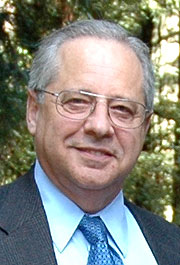Professor David S. Kliger
The Science Daily article Why Diving Marine Mammals Resist Brain Damage From Low Oxygen said
“No human can survive longer than a few minutes underwater, and even a well-trained Olympic swimmer needs frequent gulps of air. Our brains need a constant supply of oxygen, particularly during exercise.Contrast that with Weddell seals, animals that dive and hunt under the Antarctic sea ice. They hold their breath for as long as 90 minutes, and remain active and mentally alert the whole time. The seals aren’t fazed at all by low levels of oxygen that would cause humans to black out. What’s their secret?
For each brain sample, the team measured hemoglobin and resident neuroglobins — the neuroglobins and cytoglobins — in the cerebral cortex. In the laboratory of coauthor David Kliger, a professor of chemistry and biochemistry at UCSC, the researchers used a technique called spectrophotometry to identify and quantify the minute quantities of brain globins that were present at the time of the animal’s death.”
David S. Kliger, Ph.D. is Professor of Chemistry and Executive Vice Chancellor and Provost at the University of California, Santa Cruz. His primary research interests are physical chemistry, biophysics, and time-resolved spectroscopy.
Dave’s research group spans the fields of physical chemistry and biophysics. As a physical chemist, he has been involved in developing a variety of time-resolved spectroscopic techniques and applying them to a wide range of photochemical, photophysical, and photobiological problems. He has developed perhaps the most sensitive system for measuring nanosecond time-resolved absorption spectra available anywhere as well as analysis techniques to efficiently extract maximum mechanistic information from the data. In addition, he has developed techniques to measure spectra with polarization information which provide more molecular structural information than available from unpolarized absorption spectra.
These techniques take advantages of both absorption differences and refractive index differences for polarized light. They can be used to study linear dichroism, with ~100 times more sensitivity than standard techniques used by others, or linear birefringence using linearly polarized light. He has also developed methods to measure circular dichroism, magnetically induced circular dichroism, optical rotatory dispersion, and magnetically induced optical rotatory dispersion using elliptically polarized light. These techniques provide a powerful set of tools for studying molecular dynamic processes.
As a biophysicist, he applies these tools to study processes important to life. He studies the mechanism of activation of visual pigments, the mechanisms of function of the plant regulatory protein phytochrome and a variety of heme proteins, such as myoglobin, hemoglobin, and cytochrome c oxidase, as well as the early events in the folding of a variety of proteins and DNA. Because his experimental capabilities are unmatched in any other laboratory he is frequently asked by people around the world to collaborate on studies of a wide range of systems. This gives him the opportunity to investigate many biological processes with collaborators around the world who are leading experts on each process. He learns a great deal from his collaborators and has fun learning about how biomolecules work.
Dave coauthored Polarized Light in Optics and Spectroscopy, Photointermediates of the Rhodopsin S186A Mutant as a Probe of the Hydrogen-Bond Network in the Chromophore Pocket and the Mechanism of Counterion Switch, Conformational Equilibration Time of Unfolded Protein Chains and the Folding Speed Limit, Nanosecond Laser Temperature-Jump ORD: Application to Early Events in Protein Folding/Unfolding, Time-Resolved Photointermediate Changes in Rhodopsin Glu181 Mutants, The Molecular Code for Hemoglobin Allostery Revealed by Linking the Thermodynamics and Kinetics of Quaternary Structural Change, and The Earliest Events in Protein Folding: A Structural Requirement for Ultrafast Folding in Cytochrome c, and edited Ultrasensitive Laser Spectroscopy (Optics and Photonics Series).
Dave earned his B.S. in Chemistry from Rutgers University in 1965 and his Ph.D. in Chemistry from Cornell University in 1970.
